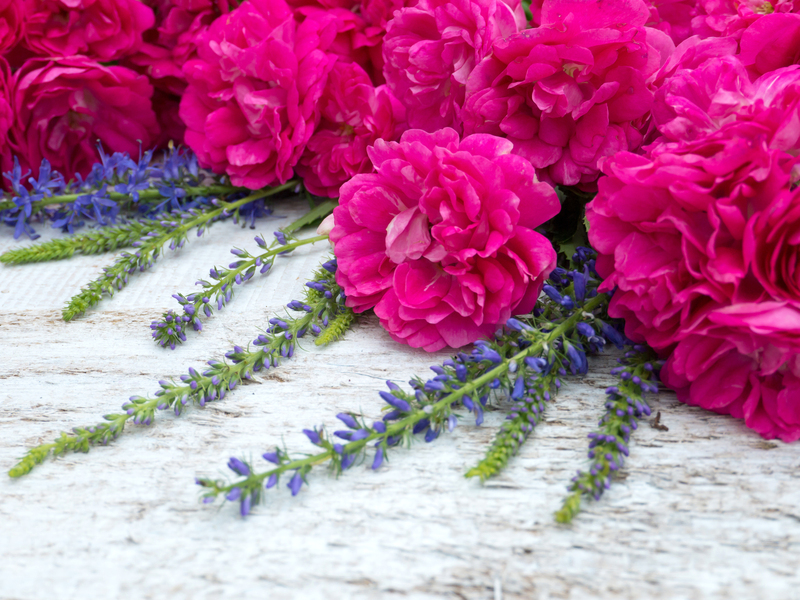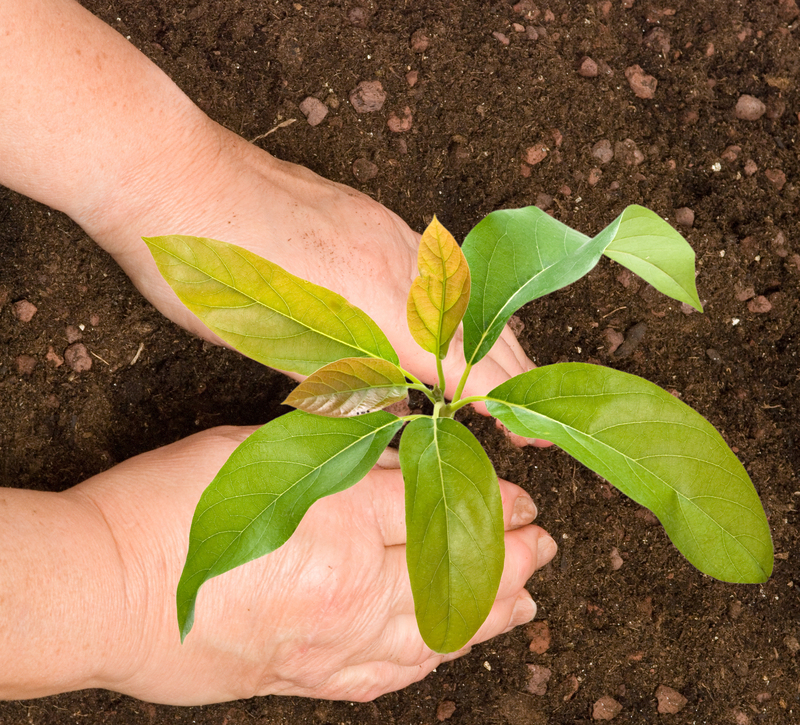Curate Spaces in Your Garden for Little Hands and Feet
Posted on 17/08/2025
Curate Spaces in Your Garden for Little Hands and Feet
Creating a nurturing and enchanting garden isn't just a treat for adults -- it can be a magical realm for children too. Designing child-friendly outdoor spaces encourages young curious minds and bodies to explore, play, and connect with nature. Whether you have a sprawling backyard or a tiny urban plot, you can easily curate spaces in your garden for little hands and feet, fostering a lifelong love for the outdoors. This article will walk you through practical ideas, design tips, and project suggestions to ensure your garden delights and educates your youngest family members.
Why Curating a Kid-Friendly Garden Matters
- Physical Development: Outdoor play boosts growth, coordination, and health.
- Mental and Emotional Wellbeing: Nature sparks curiosity, reduces stress, and improves mood.
- Educational Growth: Gardens nurture learning through hands-on science, math, and ecology activities.
- Family Bonding: Gardening together cultivates teamwork and creates lasting memories.
A garden designed for kids can be their first science lab, art studio, and adventure park all in one. Let's delve into how to curate spaces in your garden for little hands and feet so that everyone reaps the rewards of a child-friendly paradise.

Principles for Designing Kid-Friendly Garden Spaces
Safety First
When creating garden spaces for kids, always prioritize safety:
- Ensure paths and patios are slip-resistant and free from tripping hazards.
- Choose non-toxic, child-safe plants (see suggestions below).
- Install shade-giving structures or trees to prevent sunburn.
- Fence off hazardous areas like ponds, pools, or tool sheds.
- Use child-friendly garden tools with rounded edges and comfortable grips.
Accessibility and Interactivity
Children will use garden spaces best when they're easy to access and designed for their size:
- Raised Beds and Containers: Set up beds at heights little hands can reach without straining. Use lightweight, unbreakable pots.
- Stepping Stones and Defined Paths: Create whimsical walkways with stones, logs, or mosaics so children know where it's safe to walk and run.
- Touchable Features: Grow soft, textural plants (lamb's ear, lavender, mint), or install sand and dirt patches for tactile play.
- Miniature Elements: Include pint-sized benches, arches, or fairy doors to enchant your young gardeners.
Engagement and Exploration
Design each garden spot with discovery in mind -- from secret hideaways to observation corners that tickle the senses.
- Smells: Chose flowers and herbs like sweet peas, rosemary, and thyme for fragrant fun.
- Sights: Use colorful, seasonal blooms or wind spinners; plant bulbs for surprise spring color.
- Sounds: Add grasses that whisper in the wind or create music walls with chimes and bells.
- Taste: Include easy-to-grow edible plants such as strawberries, cherry tomatoes, or snap peas.
- Touch: Grow fuzzy, rubbery, or soft-leaved plants; let kids dig, stack, or build with soil and stones.
Creative Garden Zones for Kids
Ready to curate special garden spaces for energetic hands and developing feet? Here are some inspired ideas to get you started:
1. Sensory Garden Corner
A sensory garden is designed specifically to stimulate all five senses. For children, such spaces promote mindfulness, creativity, and language development. To create a sensory space in your garden for little hands and feet:
- Smell: Plant lavender, mint, and scented geraniums along pathways.
- Touch: Include soft moss, smooth river stones, and velvety lamb's ear.
- Sound: Add rustling bamboo, ornamental grasses, or a small water feature.
- Taste: Grow edible violas, mini carrots, or alpine strawberries.
- Sight: Display bright annuals and variegated foliage for visual excitement.
2. Kid-Size Veggie Patch
Grow a child's confidence and curiosity with a dedicated veggie patch. Kids love to plant, water, and harvest what they can eat. Design their plot with:
- Simple, quick-growing crops such as radishes, lettuce, peas, and cherry tomatoes.
- Raised beds or painted tire planters at child-height.
- Bright labels and fun markers shaped like bugs or animals.
- A low, lightweight watering can or drip irrigation system for easy care.
- Try alternative planting like straw bales or vertical gardens for urban gardens.
3. Mini Outdoor Classroom
Transform a spot in your garden into a learning zone. Here, your children can explore science, art, and storytelling amidst nature:
- Install a small picnic table or log circle for gathering and projects.
- Hang a chalkboard for lessons on insects, weather, or plant parts.
- Provide magnifying glasses and bug catchers for up-close observation.
- Set up "nature trays" filled with pebbles, leaves, and pinecones for creative play.
- Encourage journaling and sketching in garden notebooks.
4. Play Nooks and Secret Hideaways
Every child needs a place to dream. Encourage imaginative play by curating a hidden garden space for little feet and hands:
- Grow a living teepee of beans, sunflowers, or willow branches.
- Weave tunnels from bamboo or flexible willow rods.
- Use tall grasses or shrubs as screens for private corners.
- Place a tent or old sheet over a sturdy frame for an instant hideout.
- Add a fairy garden or dinosaur land with miniature figures.
5. Mud Kitchen and Water Play Area
A mud kitchen is the ultimate outdoor play installation for young chefs and mud pie makers. Curate a safe, mess-friendly zone with:
- Old pots, pans, wooden spoons, and ladles (thrift store finds work well).
- A sturdy bench or pallet with outdoor-friendly storage bins.
- Easy access to water -- a bucket, hose, or even a rain barrel.
- A patch of loose soil, mulch, or sand for concocting mud "recipes."
- Optional: install a small pump or tap for advanced water play.
Child-Safe Plants for Little Gardeners
When you design your garden spaces for little hands and feet, always select plants that are non-toxic and forgiving:
- Herbs: Basil, parsley, mint, chives, oregano.
- Flowers: Sunflowers, nasturtium, marigold, pansy, calendula.
- Edibles: Strawberries, snap peas, blueberries, radishes, carrots.
- Sensory: Lamb's ear, rosemary, sage, violas.
- Shade: Ferns, hosta, coleus.
Avoid all parts of plants like foxglove, daffodil, nightshade, oleander, and rhubarb leaves, which can be poisonous if touched or eaten.
Bonus Garden Activities for Kids
Once you've curated your family garden and designated spaces for little hands and feet, keep young gardeners busy with enriching activities:
- Start a "seed race" -- see which seeds germinate first or grow tallest.
- Create nature crowns and wands from twigs, leaves, and flowers.
- Host a bug safari and identify friendly pollinators and beneficial insects.
- Make natural paints or dyes with petals, berries, and beet juice.
- Construct birdhouses, butterfly feeders, or garden markers.

Tips for Maintaining Your Child-Friendly Oasis
- Routine Safety Checks: Inspect for sharp objects, pests, or toxic plant volunteers.
- Pest Management: Opt for non-chemical controls or natural deterrents safe for kids.
- Seasonal Refreshes: Rotate crops, add new sensory features, and repaint markers annually.
- Community Involvement: Engage neighbors or schools in shared children's gardening projects.
- Let Kids Lead: Encourage kids to help plan, plant, and decorate with their own ideas.
Conclusion: A Garden for Growing Together
The rewards of curating spaces in your garden for little hands and feet ripple far beyond the backyard. You spark wonder, support healthy growth, and lay the roots for environmental stewardship and creativity. Whether you transform a windowsill, a patio, or an expanse of lawn, the smallest hands deserve a corner of nature to call their own. So gather your seeds, don't be afraid to dig in alongside your kids, and enjoy the memories, lessons, and laughter your family garden will bring for years to come.
Ready to get started? Invite your children to help plan your next garden project and watch as your outdoor space becomes a playground, a classroom, and a wonderland for children and adults alike.

